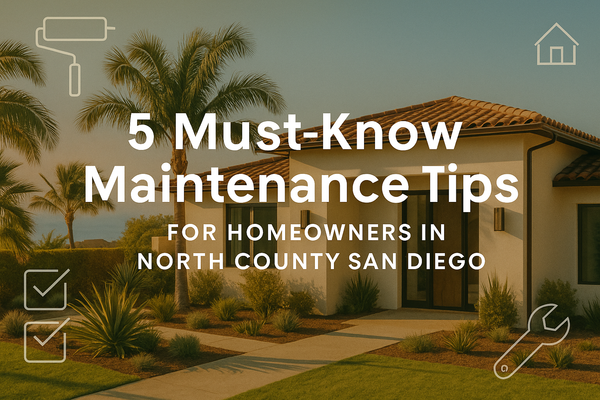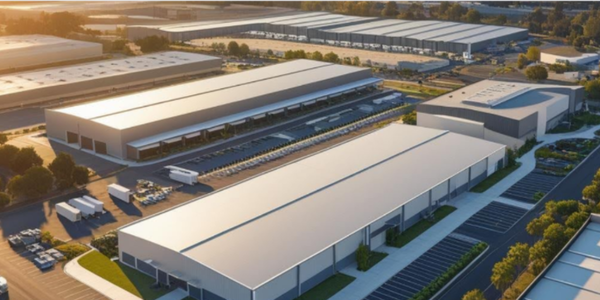How to Buy Commercial Property in Orange County: What Investors Need to Know
Orange County’s commercial real estate market is one of the most competitive and high-value regions in California—and for good reason. Whether you’re seeking high-return rental income, long-term equity appreciation, or a hedge against inflation, buying commercial property here can be a powerful wealth-building strategy. But with premium prices, zoning complexities, and evolving post-pandemic usage patterns, investors can’t afford to make uninformed decisions.
This guide will walk you step-by-step through how to buy commercial property in Orange County in 2025. From choosing the right property type and financing model to understanding the most profitable locations and avoiding costly mistakes, this resource is built to help both first-time and seasoned investors make smarter, data-backed decisions.
Why Orange County is a Prime Commercial Real Estate Market?
Here are all the right reasons to why Orange County is a prime commercial real estate market:
1. Diverse Economy Powers Demand
Orange County isn’t dependent on one sector—it’s powered by a robust blend of technology, healthcare, tourism, manufacturing, and higher education. The result is a balanced and resilient commercial market. Businesses need office space, logistics centers, storefronts, and mixed-use developments to serve this dynamic population. As a result, vacancies stay low, and cap rates remain competitive even during economic slowdowns.
2. High-Income Population Fuels Growth
The median household income in Orange County exceeds $100,000, with significant concentrations of wealth in cities like Irvine, Newport Beach, and Laguna Niguel. This purchasing power supports upscale retail, service industries, and professional services—making commercial property ownership in well-zoned areas extremely lucrative.
3. Land Scarcity Creates Long-Term Appreciation
Unlike inland regions, Orange County has very limited developable land. Most areas are already built out or have strict zoning limitations, making new commercial development difficult. This scarcity drives appreciation and ensures existing assets—especially in prime locations—continue to gain value over time.
Commercial Property Types to Consider in Orange County
Here are the types of commercial properties to consider in Orange County:
Retail Centers and Strip Malls
With the shift away from traditional malls, neighborhood retail centers anchored by grocery stores, fitness centers, or medical clinics are thriving. These properties tend to offer strong tenant retention, recession resistance, and stable income in affluent zip codes.
Best cities: Tustin, Newport Beach, Costa Mesa
Office Space and Medical Suites
While traditional office space has seen a dip in demand post-pandemic, Orange County’s medical and flex office sectors are booming. Irvine and Laguna Hills have become hubs for medical services, tech startups, and coworking spaces tailored to hybrid work models.
Best cities: Irvine, Aliso Viejo, Laguna Hills
Industrial and Warehouse Facilities
The industrial sector in Orange County is experiencing record-low vacancies. Distribution centers, cold storage, and last-mile delivery facilities are in high demand due to e-commerce growth. Properties near major transportation corridors (I-5, I-405) command premium rents.
Best cities: Santa Ana, Fullerton, Anaheim
Multifamily (5+ Units)
These assets qualify as commercial real estate and provide dual benefits: rental cash flow and long-term appreciation. Cities with growing populations and proximity to job centers see especially strong performance in this category.
Best cities: Garden Grove, Anaheim, Buena Park
Navigating Orange County’s commercial market takes insider knowledge. Our team can help you match your investment goals with the right asset class.
Get Matched With a Commercial Property Expert
Step-by-Step: How to Buy Commercial Property in Orange County

Step 1: Set Clear Investment Goals
Before even browsing listings, define your primary objective:
- Cash flow: Buy fully-leased properties with long-term tenants.
- Appreciation: Focus on emerging neighborhoods or underutilized spaces for repositioning.
- Value-add: Seek properties needing upgrades or redevelopment for increased returns.
Also determine your risk tolerance, management style (hands-on vs. passive), and ideal time horizon.
Step 2: Build Your Local Investment Team
Unlike residential investing, commercial deals are more complex and require a strong professional network. At a minimum, your team should include:
- A local commercial broker with niche expertise
- A CRE-savvy attorney for contract and lease review
- A CPA to structure tax-advantaged ownership (LLC, 1031 exchange, etc.)
- A lender experienced in commercial loans
- A property manager (especially for multi-tenant buildings)
Step 3: Choose the Right Submarket
Orange County has dozens of cities and micro-markets, each with unique pros and cons. Consider:
- Irvine: Class A office, life sciences, high-income tenants
- Santa Ana: Affordable mixed-use and redevelopment zones
- Anaheim: Tourist-driven retail and hospitality properties
- Fullerton & Garden Grove: Strong demand for light industrial and multifamily
Use market reports and rent comparables to narrow your target area.
Step 4: Run a Detailed Financial Analysis
Buying a commercial property isn’t about emotion—it’s about math. Analyze:
- Net Operating Income (NOI): Gross income – operating expenses
- Cap Rate: NOI ÷ Purchase price (OC average in 2025: 5.5–6.5%)
- DSCR (Debt Service Coverage Ratio): Should be 1.2 or higher
- Vacancy Rate: Know average local vacancy for your property type
- Lease Terms: NNN vs. gross leases, lease length, renewal clauses
Review rent rolls, operating statements, tax assessments, and HOA dues.
Step 5: Secure Financing
In 2025, interest rates for commercial properties average 7–8.5%, so creative structuring is key. Common financing options include:
- SBA 504/7(a) loans (for owner-occupied properties)
- Commercial bridge loans (short-term for value-add deals)
- Traditional commercial mortgages (banks, credit unions)
- Syndication or JV partnerships
- Seller financing (increasingly common in 2025)
Expect to bring 25–35% down and provide detailed business plans.
Step 6: Conduct Due Diligence
You’ll need to evaluate every aspect of the property and transaction. Key items include:
- Environmental Phase 1 report (especially for industrial)
- Title search and lien verification
- Tenant estoppel certificates
- Zoning and permitted use
- Property inspection: roofing, foundation, HVAC, parking compliance
Work with experts and don’t cut corners—mistakes can cost hundreds of thousands.
Step 7: Close the Deal and Manage Wisely
After a successful closing, immediately focus on operations. If the property is occupied, review leases, communicate with tenants, and implement new systems if needed. For vacant or value-add projects, start upgrades and lease-up plans right away. Consider hiring a local management firm if you’re investing from out of town.
Understanding cap rates, rent rolls, and zoning laws isn’t optional—it’s essential. Get a tailored market breakdown based on your budget and goals.
📊 Request Your Free Orange County Investment Report
2025 Commercial Market Trends in Orange County

Office-to-Residential Conversions
Cities like Irvine and Santa Ana are approving more conversions of outdated office space into residential or mixed-use developments. These projects offer great upside for investors with redevelopment experience.
Zoning Reform and Incentives
New state and local laws are expanding what’s allowed in commercial zones. Watch for:
- Incentives for mixed-use developments
- Fast-track permitting for green buildings
- Density bonuses for workforce housing in commercial corridors
Remote Work and Flex-Space Demand
As hybrid work becomes permanent, demand for small, flexible office suites in suburban areas has increased. Flex-industrial properties are also trending as companies seek adaptable space.
ESG and Green Compliance
Investors in Orange County should be aware of state-driven environmental mandates. LEED certification, solar panels, and energy-efficient retrofits can help secure premium tenants and offer tax credits.
Frequently Asked Questions
1. Is Orange County a good place to buy commercial property in 2025?
Yes, Orange County remains one of the most attractive markets for commercial real estate investors in 2025. With a diverse economy, high-income population, and limited land availability, the region supports strong rental demand, long-term appreciation, and low vacancy rates. Investors are particularly drawn to sectors like medical office, industrial space, and mixed-use developments.
2. What types of commercial properties offer the best returns in Orange County?
In 2025, industrial properties, medical office suites, and neighborhood retail centers offer some of the best returns. These asset types benefit from ongoing demand due to e-commerce growth, healthcare expansion, and lifestyle-driven consumer behavior. Multifamily buildings with 5+ units are also performing well in high-density cities like Garden Grove and Anaheim.
3. How much do you need to invest in commercial real estate in Orange County?
Entry costs for commercial properties in Orange County typically range from $1 million to over $10 million depending on location, asset class, and tenant mix. Investors should expect to put down 25%–35% of the purchase price and budget for due diligence, legal fees, and potential capital improvements.
4. What is the process to buy commercial property in Orange County?
The process involves several critical steps: defining your investment goals, assembling a local team (broker, attorney, CPA), selecting the right submarket, conducting financial analysis, securing financing, performing due diligence, and finalizing the deal. Working with experienced local professionals greatly increases your success rate and minimizes costly mistakes.
Final Thoughts: Should You Buy Commercial Property in Orange County?
If you're looking for a market that blends long-term appreciation with stable income potential, Orange County is one of the best commercial real estate markets in the U.S. But success depends on data, location strategy, and building the right team. Whether you're looking to reposition an older retail strip in Santa Ana or invest in Class A medical space in Irvine, 2025 presents rare opportunities for informed investors.
Ready to Buy?
FAM Realty Group specializes in helping investors identify, evaluate, and acquire high-performance commercial real estate in Orange County. From off-market deals to complex financing strategies, we provide full-service support.
Schedule a Commercial Consultation
Call Now: (619) 867-5309
Let us help you turn your investment goals into long-term portfolio growth.
Categories
- All Blogs (43)
- Buyers and Sellers (19)
- Downsizing (1)
- Gift Guide (1)
- Giving Back (1)
- Home Buyers (6)
- Home Design (4)
- Home DIY Projects (3)
- Home Organization (1)
- Home Seller's (1)
- Homeowner's Guide (6)
- Homeowner's Tips (1)
- Homeownership Goals (4)
- Housing Market (8)
- iBuyers (1)
- Saving Money (2)
- Sellers (1)
Recent Posts










